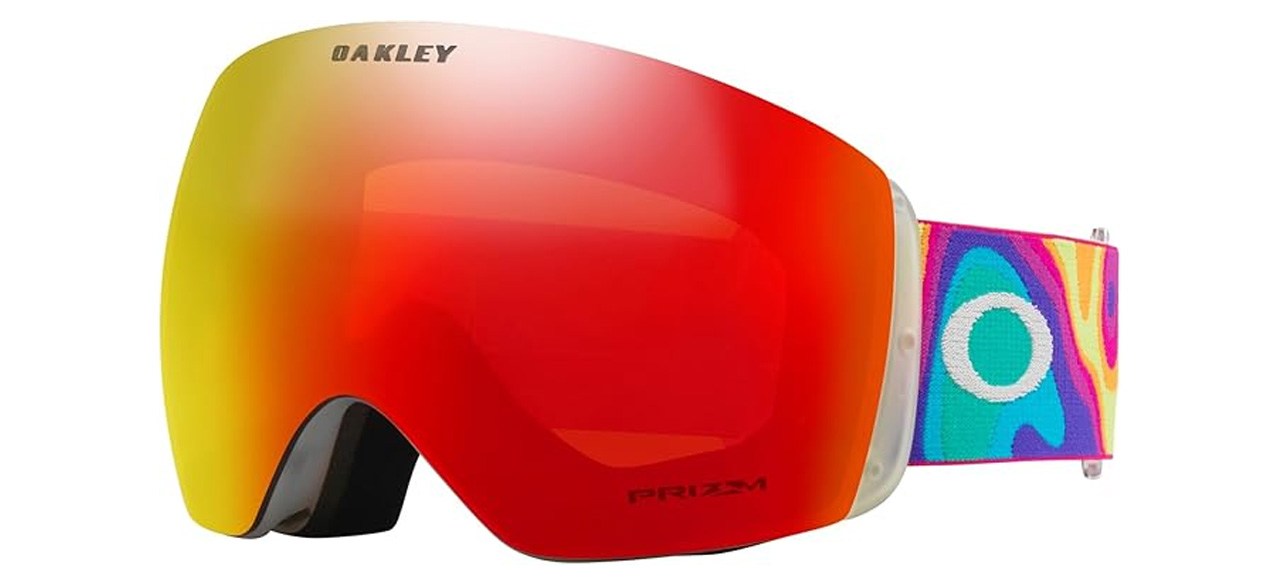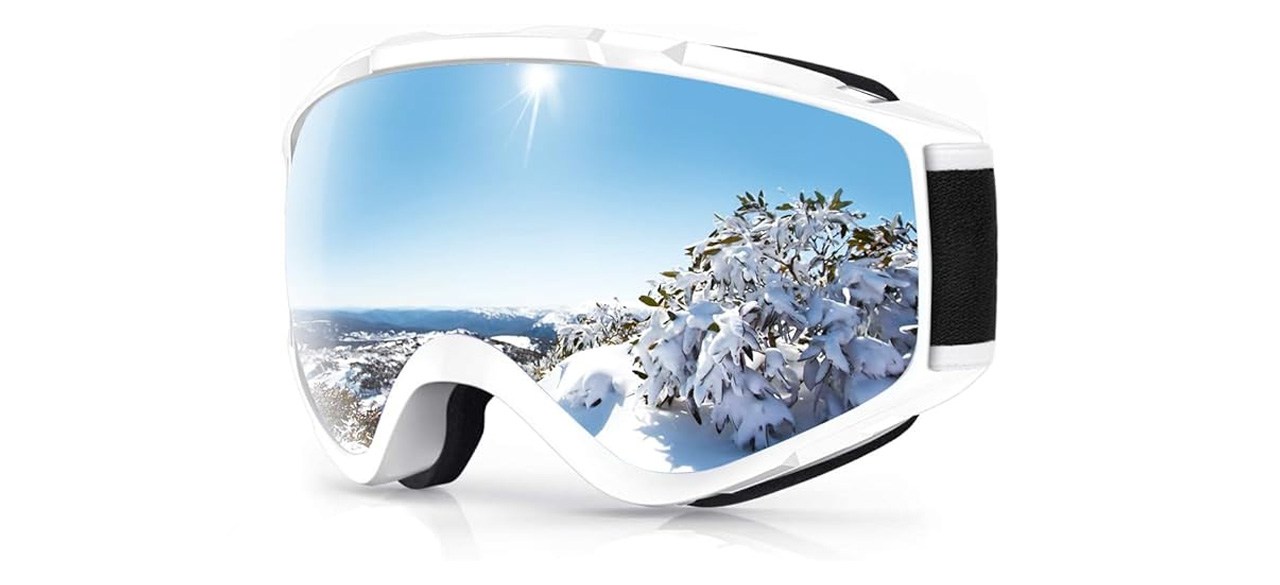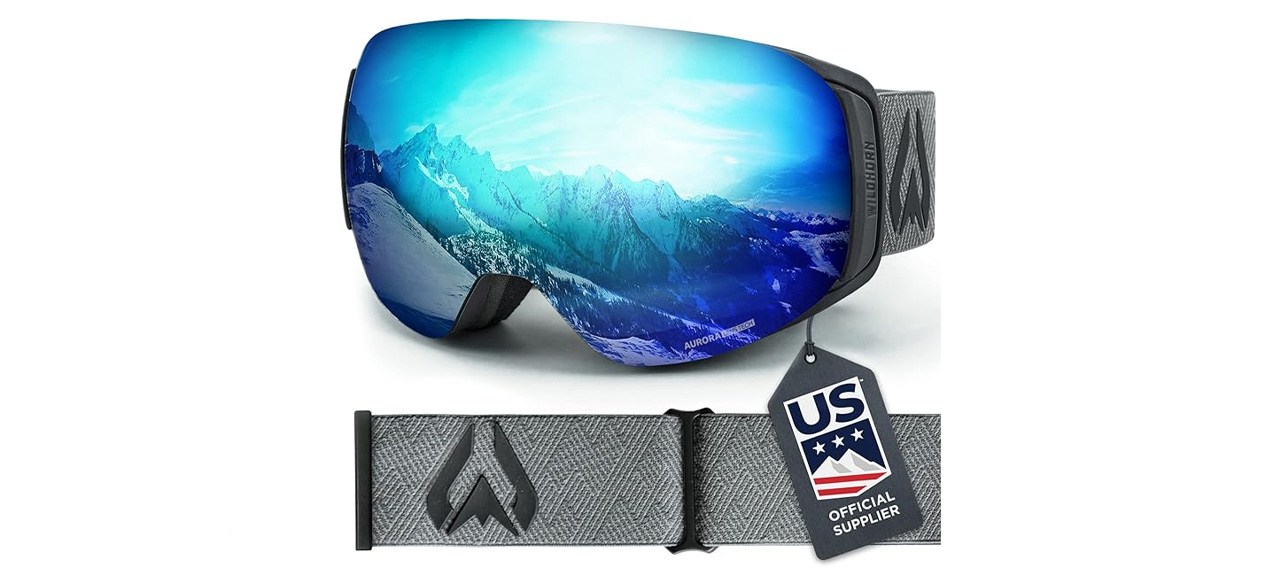Which ski goggles are best?
Whether you’re picking up a new winter hobby or already consider yourself a skiing pro, buying a pair of reliable ski goggles is hardly a faulty investment. Choosing a protective pair of goggles is imperative to ensure your safety and comfort as you hit the slopes. If you have only a vague idea of the different types of ski goggles available and their various features, check out our buying guide to help determine the right pair to pack for your next snowy adventure. Our top pick is from Oakley, a trusted brand, and the goggles feature top-notch anti-fogging technology.
What to know before you buy ski goggles
Lens shape
Ski goggles are available with two main lens shapes: cylindrical and spherical.
Cylindrical lenses curve horizontally but are vertically straight. These goggles are the typical go-to for beginning or leisurely skiers because they are less expensive. Cylindrical lenses also tend to be pretty flexible, making them easy to remove and replace if the lens gets old, rundown, or you simply want to purchase a new tint. Consumers also like the look of cylindrical goggles. There are some cons, however. Many users experience distortion due to the unique curve of these lenses, and peripheral vision is especially susceptible to this distortion. Further, extra glare or fogging is possible with this design.
Spherical lenses are curved both vertically and horizontally, offering users a wider viewing range without much neck movement. The spherical build also cuts down on glare while on the slopes. The larger surface area on these lenses means skiers can get a fantastic peripheral view without distortion, and the goggles are less likely to fog up than their cylindrical counterparts. Expect to pay a pretty penny for spherical lenses, though.
Frame size
Frame sizes are broken down into six different categories. Children who need ski goggles should opt for an extra-small pair. Teenagers or women with small faces may want to try a small frame. Small/medium is a fit that suits most women comfortably, while medium is the average fit for most men. Medium/large is the go-to for men with larger faces. Large goggles are typically worn by skiers who prefer an oversized feel.
What to look for in quality ski goggles
Single vs. double lens
When shopping for ski goggles, you might notice that some goggles have a single-lens construction, while others sport a double-lens build. Single-lens goggles simply have one lens. Double-lens goggles, however, are built with two lens layers, which helps to reduce lens fogging.
Lens tint
Lens tint is an important protective feature that determines the amount of light your goggles let in. Visible light transmission (VTL) is divided into five categories and is highly dependent on the weather conditions of your ski trip.
Category 0 is best for nightwear as this tint allows 80% to 100% VTL. Category 1 should be used on overcast days and offers 46% to 79% VTL. Those who prefer a light tint might opt for category 2 at 18% to 45% VTL, usually worn on brighter overcast days or in moderately sunny conditions. Category 3 should be used in cases of bright light as it only allows 8% to 17% VTL into the lens. The brightest light conditions (for instance, high elevation or highly reflective snow) will need the darkest tint of category 4 with 3% to 7% VTL.
How much you can expect to spend on ski goggles
Ski goggle prices range widely from about $10-$250. Beginning or leisurely skiers may find a pair of ski goggles that cost $10-$25 fine for the occasional ski trip. These goggles are usually cylindrical and built with a single lens.
Those needing a mid-range solution will likely spend $25-$50. Goggles in this range typically have a spherical shape as well as anti-fogging technology.
Customers seeking the highest-quality ski goggles should expect to pay $100 to $250 per pair. At this price, buyers will find durable, comfortable, sleek models built specifically for the avid skier.
Ski goggles FAQ
Q. How do I know if my ski goggles are the correct size?
A. Any pinching on the bridge of your nose or temple most likely means you need to loosen the strap. If loosening the strap does not relieve the pinch, then you should go to a larger size. Also, make sure to purchase a larger size if your eyes feel uncomfortable pressure from the frame.
Q. Can I wear my ski goggles with my glasses?
A. Yes! Just be sure to buy a pair of goggles that are specifically designed to fit over your glasses. You can also purchase goggles with prescription lenses built into the frame, though these tend to be more expensive.
What are the best ski goggles to buy?
Top ski goggles

Oakley Flight Deck Ski Goggles
Our take: Those wanting high-quality ski goggles should check out this top-selling pair known for their anti-fogging technology and premium build.
What we like: Wide lens with frameless construction. Various color options available. Made with durable polycarbonate.
What we dislike: Much higher price compared with other goggles on our list.
Top ski goggles for the money

Findway Ski Goggles OTG
Our take: Leisurely skiers or those simply wanting to save a buck will appreciate the premium look and feel of these inexpensive ski goggles.
What we like: Offers double-layer lens construction to minimize fogging. Customers appreciate the comfortable padding. Venting keeps moisture from building across the lens. You can wear them over your glasses.
What we dislike: Some reported issues with the lens fogging up.
Worth checking out

WildHorn Outfitters Roca Ski Goggles
Our take: A comfortable pair of mid-range ski goggles notable for their magnetic lens-changing design.
What we like: Sleek look with frameless lens. Great color options. Spherical lens offers wide viewing range.
What we dislike: Can fog in heavy weather conditions and lens has a tendency to scratch.
Prices listed reflect time and date of publication and are subject to change.
Check out our Daily Deals for the best products at the best prices and sign up here to receive the BestReviews weekly newsletter full of shopping inspo and sales.
BestReviews spends thousands of hours researching, analyzing and testing products to recommend the best picks for most consumers. BestReviews and its newspaper partners may earn a commission if you purchase a product through one of our links.
Distributed by Tribune Content Agency, LLC.
Originally Published:





